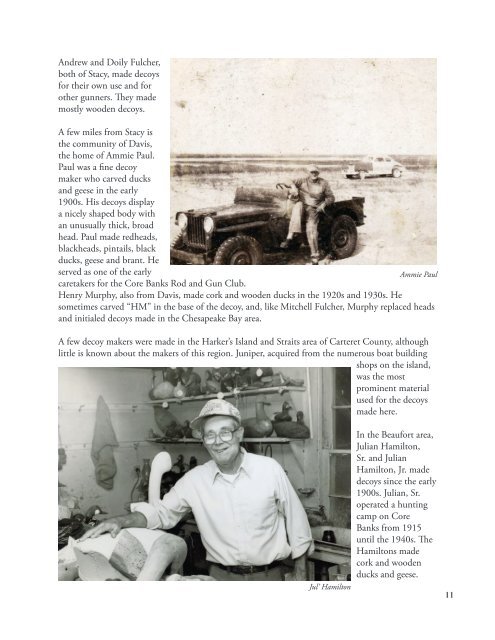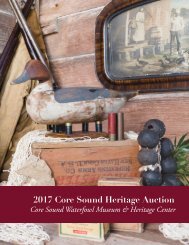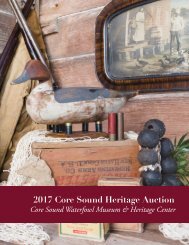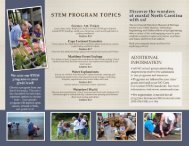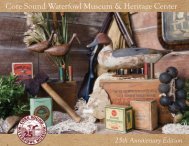Heritage Auction Final Digital 11-17
Create successful ePaper yourself
Turn your PDF publications into a flip-book with our unique Google optimized e-Paper software.
Andrew and Doily Fulcher,<br />
both of Stacy, made decoys<br />
for their own use and for<br />
other gunners. They made<br />
mostly wooden decoys.<br />
A few miles from Stacy is<br />
the community of Davis,<br />
the home of Ammie Paul.<br />
Paul was a fine decoy<br />
maker who carved ducks<br />
and geese in the early<br />
1900s. His decoys display<br />
a nicely shaped body with<br />
an unusually thick, broad<br />
head. Paul made redheads,<br />
blackheads, pintails, black<br />
ducks, geese and brant. He<br />
served as one of the early<br />
Ammie Paul<br />
caretakers for the Core Banks Rod and Gun Club.<br />
Henry Murphy, also from Davis, made cork and wooden ducks in the 1920s and 1930s. He<br />
sometimes carved “HM” in the base of the decoy, and, like Mitchell Fulcher, Murphy replaced heads<br />
and initialed decoys made in the Chesapeake Bay area.<br />
A few decoy makers were made in the Harker’s Island and Straits area of Carteret County, although<br />
little is known about the makers of this region. Juniper, acquired from the numerous boat building<br />
shops on the island,<br />
was the most<br />
prominent material<br />
used for the decoys<br />
made here.<br />
Jul’ Hamilton<br />
In the Beaufort area,<br />
Julian Hamilton,<br />
Sr. and Julian<br />
Hamilton, Jr. made<br />
decoys since the early<br />
1900s. Julian, Sr.<br />
operated a hunting<br />
camp on Core<br />
Banks from 1915<br />
until the 1940s. The<br />
Hamiltons made<br />
cork and wooden<br />
ducks and geese.<br />
<strong>11</strong>


